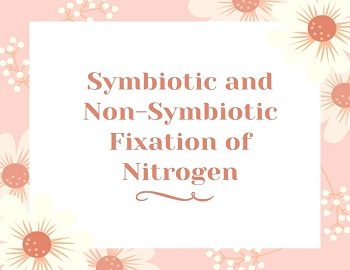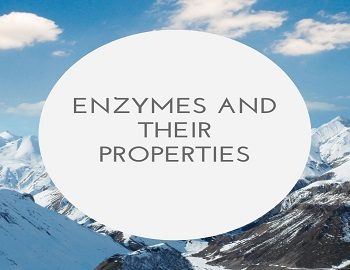Table of Contents
Symbiotic and Non-Symbiotic Fixation of Nitrogen:
Nitrogen fixation is defined as the phenomenon of the conversion of free nitrogen of the atmosphere into the nitrogenous salts which can readily be absorbed by the plants.
The atmosphere contains about 78.1% of nitrogen. The plants and animals are not able to capture the atmospheric nitrogen directly. For its utilization, it has to be first fixed. For this purpose, the atmospheric nitrogen is first converted into inorganic compounds like nitrites and nitrates by means of nitrogen-fixing bacteria which may be following two types-
Symbiotic Nitrogen Fixation:
In this process, fixation of molecular nitrogen occurs from a mutualistic association between leguminous or non-leguminous plants and bacterium. Symbiosis is the relationship between two organisms where both obtain some benefit from each other. The most interesting symbiotic relationship is seen between leguminous plants and bacteria Rhizobium. Infection of bacteria into roots of legumes forms root nodules. It takes nitrogen directly from the air and converts it into nitrogenous components such as amino acids and polypeptides. This conversion is the result of the combined action of plant cells and bacterial cells. The Rhizobium species is always specific to the species of legumes. A single strain of Rhizobium can infect only a certain species of legumes and nodule formation occurs in about 90 per cent of leguminous plants.
Certain non-leguminous plants can also fix nitrogen with the symbiosis of bacteria other than Rhizobium. The best example is Psychoteria plant which in association with the bacterium Klebsiella fixes nitrogen in the roots.
Free-living or non-symbiotic Nitrogen Fixation:
The bacteria showing non-symbiotic nitrogen fixation phenomenon include anaerobes such as Clostridium pasteurianum and aerobes such as Azotobacter and Desulfovibrio.
Azotobacter has the highest rate of oxygen uptake than any of the living organism. They grow in the soil and are autotrophs, but require organic substances as the source of energy. These organic substances are decomposed into cellulose, starch and proteins. If the carbohydrates such as starches are added to the soil, nitrogen accumulation will be stimulated through the growth of Azotobacter and other non-symbiotic Nitrogen-fixing bacteria which take nitrogen from the atmosphere, compere, combine with their composition and release it in the organic form as secretion on death.
- Growth and Development
- Write a short note on Respiration?
- Micro-Organisms Causing Diseases
- Male Reproductive System
- Female Reproductive System
- Disorders Caused by Addiction to Narcotic Drugs
- Acquired Immuno Deficiency Syndrome (AIDS)
- Tamil Board: Living World





![Pithecanthropus Erectus [Java Man] 6 Pithecanthropus Erectus](https://gkscientist.com/wp-content/uploads/2021/05/Pithecanthropus-Erectus.jpg)



Comments (No)